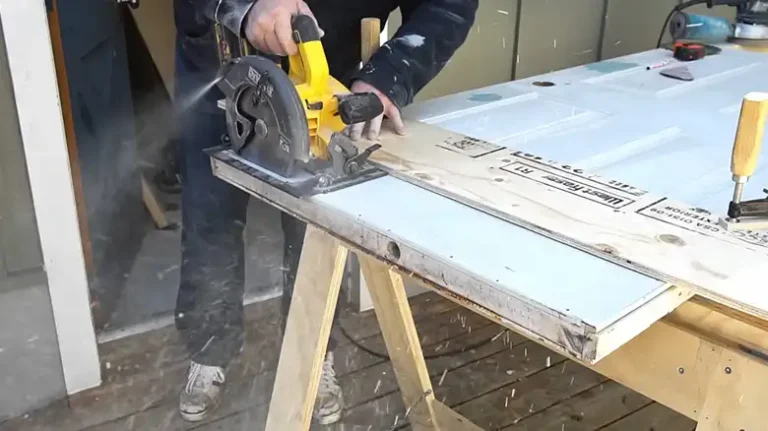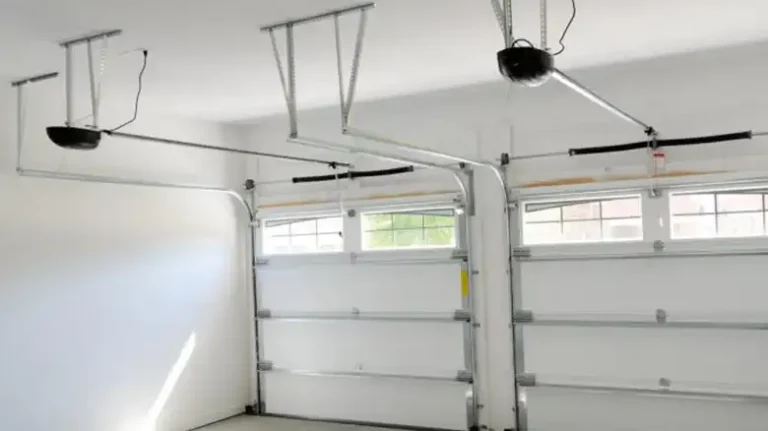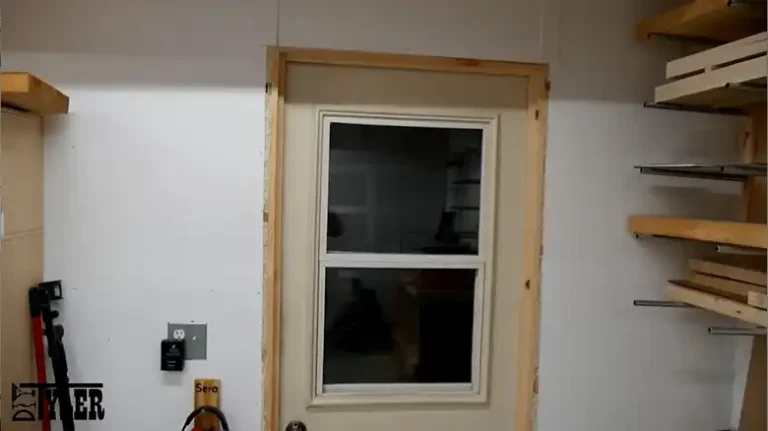[Explained] Can You Bend a Door Back into Shape?
Whether it was the result of an accidental collision or the unfortunate aftermath of a rowdy family gathering, a bent door can be a headache for any homeowner. It can also happen due to regular wear and tear over a longer period of time. Therefore, you, as a homeowner, might wonder, if you can bend a door back into shape.
The good news is that with the right tools, knowledge, and a bit of patience, you can often breathe new life into a damaged door.
In this casual guide, we’re here to explain door repair, when and how to do it and the tools you need to get the job done. We will also provide some professional tips in the end to yield the best results. So, let’s begin.

When Can You Bend a Door Back into Shape?
Before you grab your toolbox, let’s talk about when it’s feasible to bend a door back into shape. Not all doors are created equal, and some damage might be beyond repair. Here’s what to consider:
1. Type of Door
Doors come in various materials and the type of door you’re dealing with plays a significant role in whether you can bend it back into shape.
- Wooden Doors: Wooden doors are often the most forgiving when it comes to reshaping. They can be steamed and bent back into shape if the damage isn’t too severe.
- Metal Doors: Metal doors are tougher to manipulate but can still be bent back if the damage is minimal. Large dents might be trickier.
- Hollow-Core Doors: These lightweight doors are the most challenging to repair due to their delicate construction. Bending them back into shape might not yield great results.
2. Extent of Damage
The extent of damage on your door is another critical factor to consider.
- Minor Dents: Small dents or slight warping are usually good candidates for repair.
- Severe Damage: If the door is seriously twisted, cracked, or has structural issues, replacement might be your best bet.
Tips from Professionals
Now that you have the basics down, let’s explore some pro tips to ensure your door repair project goes smoothly:
- Patience is Key: Rushing through the repair can lead to more problems. Take your time and work slowly. Small, careful adjustments are more likely to yield a successful outcome.
- Test the Wood (For Wooden Doors): Before applying heat, make sure to test the wood’s moisture content. Dry wood responds better to reshaping. Moisture meters are readily available at hardware stores and can help you determine the wood’s condition.
- Safety First: When working with tools and heat sources, it’s essential to prioritize safety. Wear appropriate safety gear, especially when using a heat gun or working with metal. Protect your eyes, hands, and lungs with safety glasses, gloves, and a dust mask.
- Consider Professional Help: If you’re unsure about the extent of damage or lack the necessary skills, it’s wise to consult a professional. They can assess the situation and recommend the best course of action, which may include door replacement.
How to Bend a Door Back Into Shape?
Okay, you’ve got a door that’s ripe for repair. Here’s how to go about it:
1. Gather Your Tools
Before you dive into the repair process, gather the necessary tools:
- Rubber Mallet
- Heat Gun or Steamer (for wooden doors)
- Clamps
- Block of Wood
- Sandpaper
- Paint and Primer (for finishing touches)
2. Assess the Damage
Before you start banging away, take a close look at your damaged door. Identify the dented or warped areas. Understanding the extent of the damage will help you determine if repair is possible.
3. Apply Heat (For Wooden Doors)
If you’re dealing with a wooden door, this step is crucial. Use a heat gun or steamer to soften the wood fibers in the damaged area. Be patient and take your time. Don’t overheat, or you might cause more damage.
4. Bend It Back
Now comes the hands-on part. Using your rubber mallet and a block of wood, gently tap the damaged area back into shape. For metal doors, you might need to use a clamp to hold the door in position while it cools. This step requires precision and patience, so take your time.
5. Sand and Finish
Once you’ve successfully bent the door back into shape, it’s time to make it look good as new. Sand the repaired area to smooth it out and remove any imperfections. Apply primer and paint to match the door’s finish. This step not only improves the door’s appearance but also provides protection against future damage.
Frequent Queries
Can I bend back a door that’s cracked?
It depends on the severity of the crack. Small cracks can often be repaired using wood glue or epoxy. However, if the crack is extensive or compromises the structural integrity of the door, replacement might be necessary.
Can I use a plunger to fix dents in a door?
While it might work for minor dents, it’s not always effective, especially for larger or more stubborn dents. Plungers are typically better suited for flat surfaces like sinks and toilets.
How do I prevent future door damage?
Preventing future damage involves careful handling and maintenance:
Avoid slamming doors. Gently close them to reduce the risk of dents and warping.
Consider using door stoppers or guards to prevent doors from hitting walls or furniture.
Regularly inspect and maintain your doors, addressing any issues promptly to prevent them from worsening.
Can I use this method for car doors with minor dents?
Yes, you can apply similar techniques to minor dents on car doors. However, it’s essential to exercise caution, use specialized tools designed for automotive repairs, and be aware of the potential impact on the vehicle’s paint and finish.
What if the door is painted? Do I need to match the paint color after repairs?
If your door is painted, matching the paint color after repairs is essential for a seamless finish. You can take a small sample of the existing paint to a hardware store to have it matched or consider repainting the entire door for a uniform appearance.
In a Nutshell
Repairing a damaged door by bending it back into shape is possible, but it’s not a one-size-fits-all solution. You’ll need to assess the type of door, and the extent of damage, and have the right tools on hand. With patience, care, and the tips provided here, you might just breathe new life into that old door.
If in doubt, though, don’t hesitate to seek professional help or consider door replacement as a viable alternative.





![[Explained] Can Door Lock Actuator Drain Battery?](https://doorsuggest.com/wp-content/uploads/2023/03/Can-Door-Lock-Actuator-Drain-Battery-768x431.webp)